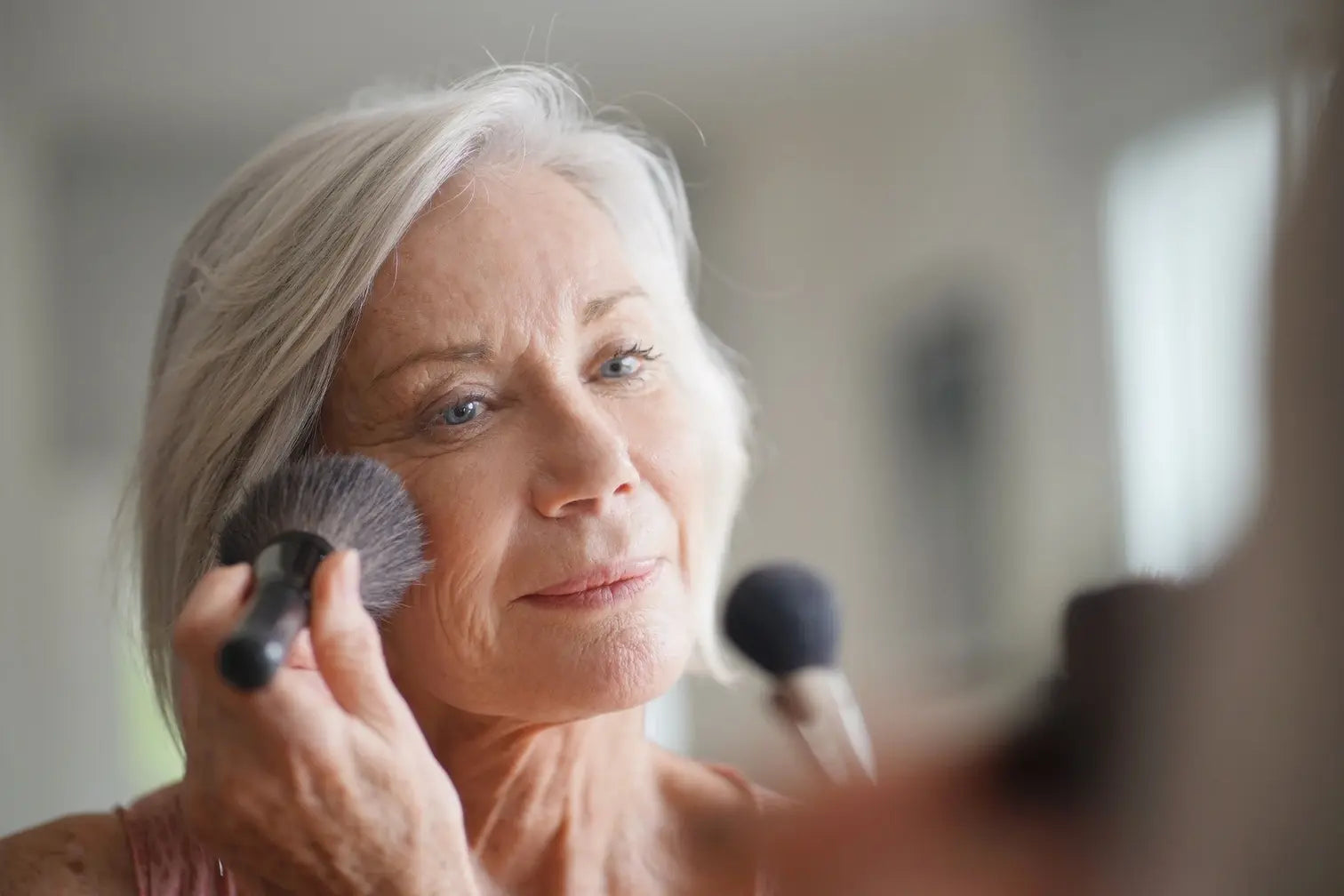Among the tens of thousands of skincare ingredients, talc has been both widely used and widely debated. But what is talc used for, and why has it become a point of contention in skin health discussions? Let’s sift through the science and the speculations to understand the impact of talc on skin health and explore safer alternatives.
What is Talc Used for in Skincare
Talc, or magnesium silicate, is a mineral known for its softness and absorbency. Found commonly in cosmetics and baby powders, talc's main allure is its unique texture and moisture managing capabilities. This makes it an appealing ingredient in products from face powders to eye shadows, offering a silky texture and a matte finish. Specifically, some of its desirable properties are:
- Absorption: The most notable property of talc is its ability to absorb excess moisture and oils, making it particularly useful in talc based baby powder, body powder, or face powder where it helps to maintain a dry, comfortable feel on the skin.1
- Texture: Talc is distinctively silky, which is highly valued as it helps create a smooth application and a soft texture to makeup. For instance, in face powders and foundations, talc has a matte finish, evenly dispersing other pigments and improving the products’ spreadability.
- Anti-caking: Talc prevents caking by absorbing moisture that can otherwise make products spoil. This helps makeup, cosmetic products, and other personal care products last longer.
- Opacifying Agent: Talc adds opacity to cosmetics, providing better coverage. This is particularly important in products like concealers and foundations, where a more opaque application can help in masking imperfections more effectively.
Effects on Skin Health
Despite its useful properties, talc’s reputation has been clouded by concerns over possible health risks. There is ongoing debate about whether inhalation of talc particles can cause respiratory issues or even more serious conditions like lung cancer, particularly with asbestos contaminated talc. 2,4 Moreover, talc might cause skin inflammation or allergic reactions, especially in those with sensitive skin. Thus, here are 7 things you need to be wary of when using talc in your skincare routine.
- Potential Asbestos Contamination: One of the most serious concerns about talc is its association with asbestos, a known carcinogen. Asbestos exposure even from trace amounts in talc products can pose significant health risks, including skin irritation or more severe health issues upon inhalation.2
- Respiratory Risks: The fine particles of talc can be easily inhaled, especially when used in the form of powders. Repeated inhalation of talc can lead to lung irritation and even an increased risk of chronic respiratory issues.3
- Clogging Pores: Although talc helps absorb oil and moisture, the fine particles can clog pores. If these talc containing cosmetics are not thoroughly cleansed from the skin, potentially exacerbating skin conditions such as acne.
- Skin Dryness: Overuse of talc can strip the skin of natural oils, leading to excessive dryness. This in turn disrupts the skin's natural barrier function, making it more vulnerable to irritants and pathogens.
- Allergic Reactions: If you have sensitive skin, talc can cause allergic reactions such as itching, redness, and rash, or even exacerbate existing symptoms.
- Risk of Ovarian Cancer: There have been concerns about the use of talcum powder in the genital area and an increased risk of ovarian cancer.4
- Long-Term Safety Uncertainties: Despite widespread historical use, comprehensive long-term studies on the safety of talc are limited. This uncertainty around the long-term effects of talc use, especially with daily, repeated exposure over years, adds to the concern about its safety profile.

OneSkin's Talc-Free Approach
OneSkin’s commitment to skin health extends beyond surface-level beauty. All of our products, including PREP daily cleanser, OS-01 FACE, OS-01 BODY, and OS-01 EYE, and OS-01 FACE SPF are meticulously designed to be free from talc and other harmful substances such as mineral oil, lanolin, petrolatum, and paraffin. By choosing talc-free formulations like our topical skin care products, you reduce the risk of skin irritation while strengthening your skin's natural barrier thanks to our scientifically and clinically validated OS-01 peptide.
Choosing Safer Alternatives
Navigating the world of skincare ingredients can be overwhelming. That's why it's crucial to be informed about what goes into your skincare products. If you want to avoid talc products, consider alternatives like rice powder, cornstarch, or kaolin clay, which provide similar benefits without the associated risks. Always aim for products that align with your health goals and skin type, ensuring a safe and effective skincare regimen. Key Takeaways:
- Talc is widely used in cosmetics for its moisture-absorbing and texture-enhancing properties
- Concerns about talc include potential contamination with asbestos, the risk of respiratory issues, and whether or not it can cause cancer.
- Skin irritation and allergic reactions are possible with talc, particularly if you have sensitive skin
- OneSkin champions a talc-free approach, focusing on safety and skin health with ingredients like the OS-01 peptide
- Alternatives to talc, such as rice powder or kaolin clay, can provide similar benefits without the risks
Key Takeaways:
- Talc is widely used in cosmetics for its moisture-absorbing and texture-enhancing properties
- Concerns about talc include potential contamination with asbestos, the risk of respiratory issues, and whether or not it can cause cancer.
- Skin irritation and allergic reactions are possible with talc, particularly if you have sensitive skin
- OneSkin champions a talc-free approach, focusing on safety and skin health with ingredients like the OS-01 peptide
- Alternatives to talc, such as rice powder or kaolin clay, can provide similar benefits without the risks
By Felix Tajanko: Felix is studying Bioengineering at the University of California - San Diego and is passionate about scientific writing as well as the research of menopausal endocrinology and microhemodynamics.
References



